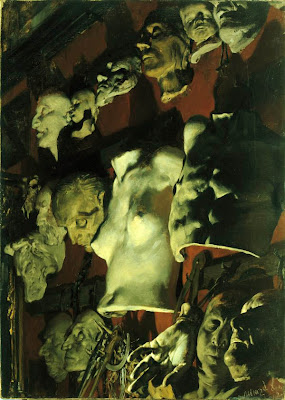
Staying in the vein of Adolph Menzel, I found this other piece which is similar in subject matter to the last one (statues in a studio), however, this one has a much different feel. Nearly all the tones in this pieces are cool. Cool greens, cool reds, cool browns and even cool whites. Darker values heighten the drama and the dramatic under lighting adds even more to this drama. As opposed to the light airy feel of the last piece, these cooler, darker tones feel constricting and heavy complimenting the eerie subject matter. There are but a few warmer tones in this piece and they surround the central torso helping to draw your attention there. I took this picture into photoshop and overlaid an orange layer over this image and adjusted so that it warmed all the tones, but didn’t change the hues (much). The result is striking. The eeriness is greatly depleted and it feels more like looking at items hanging over a warm fireplace. Again I say…interesting.




